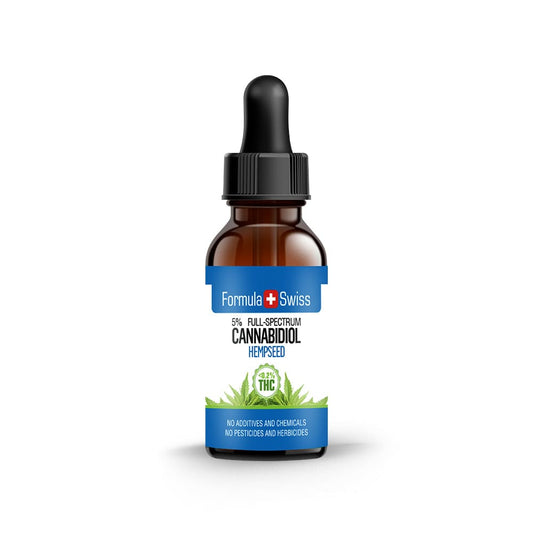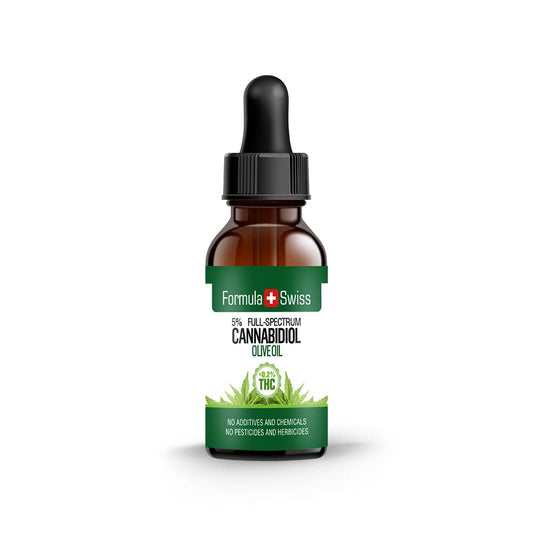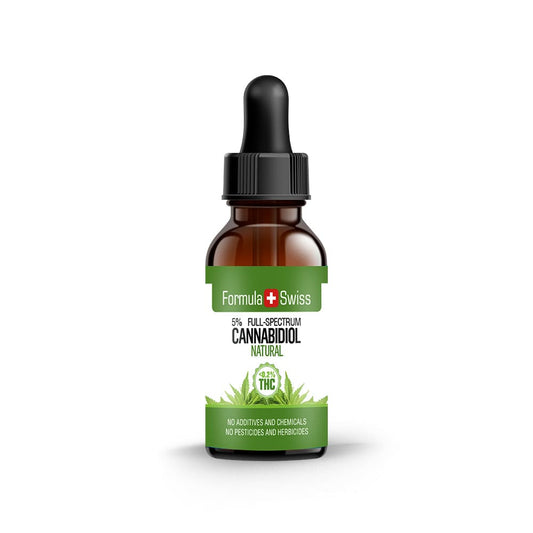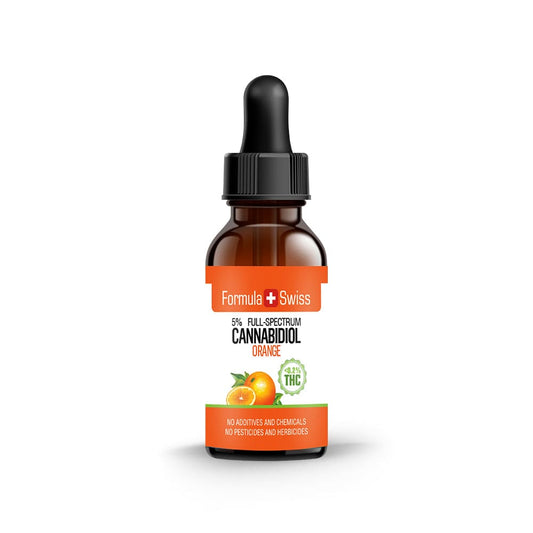THCH, or tetrahydrocannabihexol, is one of the lesser-known cannabinoids starting to appear in advanced cannabis research. Structurally, it’s closely related to THC, with a six-carbon side chain instead of five.
This subtle variation influences how it fits within the plant’s broader chemical makeup and makes it a point of interest in detailed cannabinoid profiling. In my work at Formula Swiss, I’ve encountered THCH in trace amounts during deep lab analysis of specific extracts.
It’s not something that shows up often, and detecting it requires a focused approach and the use of highly sensitive instrumentation. These results are part of broader efforts to chart the full range of cannabinoids present in refined oils.
There’s something genuinely rewarding about identifying a rare compound like THCH hidden in the data. It adds another layer to the work and reminds me that the cannabis plant still holds plenty of untapped detail, especially when you know what to look for and how to find it.
Save up to 30% when you order your CBD oil today
Key takeaways
- THCH stands as an understudied cannabinoid with a structure akin to THC.
- Known scientific data on tetrahydrocannabihexol is mainly guessed from its similarity to THC.
- This compound sparks interest due to its potential psychoactive properties and theoretical potential.
- Understanding THCH could greatly influence future cannabis research.
- Most of what we know about THCH comes from early research, with a big gap in human studies.
This article is provided for informational purposes only and does not relate to any of the products available in our webshop. For more information, please see our full disclaimer.
Introduction to THCH
THCH, or tetrahydrocannabihexol, is a relatively new cannabinoid that has started to draw attention in cannabinoid research. THCH was first isolated from the cannabis plant in 2019 by an Italian research team.
The finding was part of a broader analytical study that also led to the identification of other cannabinoids, including THCP and CBDP. This research expanded the known chemical diversity of the cannabis plant and contributed to ongoing efforts to map its full cannabinoid profile.
At this stage, research into THCH is still very much in its early days. Its appearance in lab work has prompted questions about how it might influence or differ from other cannabinoids in terms of interaction and stability. As someone who works closely with cannabis extracts, I’m interested in how THCH fits into the broader cannabinoid studies.
Chemical structure of THCH (Tetrahydrocannabihexol)
Examining the structure of THCH offers useful insight into where it fits within the wider family of cannabinoids. Understanding its molecular makeup helps clarify how it differs from more commonly studied compounds and why it has attracted interest in research.
THCH has the chemical formula C₂₂H₃₂O₂ and is considered a hexyl homologue of delta-9-THC. This means it features a six-carbon alkyl side chain, rather than the five-carbon chain found in delta-9-THC.

This subtle structural difference has prompted scientific interest in how it may influence receptor interaction and overall behaviour during lab testing. While studies are ongoing, this variation is one of the key reasons THCH has become a subject of further investigation.
Comparing THCH to other cannabinoids
THCH differs from other cannabinoids like THC in subtle but notable ways, particularly in the length of its carbon side chain and the positioning of double bonds within the molecule. These variations may influence how THCH interacts with cannabinoid receptors, which is why it has become a subject of interest in structural and pharmacological research.
What is THC (Tetrahydrocannabinol)?
Unique molecular features
One key difference is that THCH contains a hexyl side chain, while THC has a pentyl group. This small structural change may alter how THCH behaves during receptor binding, potentially affecting its overall profile in laboratory studies.
The distinct molecular arrangement of THCH suggests that it could interact differently with the endocannabinoid system compared to more well-known cannabinoids. These structural traits may also influence how the compound is absorbed, metabolised, or retained in the body.
While research is still developing, such factors continue to inform ongoing efforts to understand the broader diversity of cannabis compounds.
The endocannabinoid system (ECS)
Synthetic Origins of THCH
Chemist Dr Mark Scialdone has noted that THCH is not typically found in natural cannabis extracts. Instead, cannabinoids with extended carbon chain lengths, such as THCH, are generally produced using synthetic methods. His observations are based in part on a study that describes the laboratory synthesis of THCP, a structurally similar compound.
According to Dr Scialdone, the process does not involve adding carbon atoms to an existing THC molecule. Rather, scientists begin with a synthetic precursor that already includes the required side chain length.

In the case of THCH, this involves the use of hexylresorcinol, a form of resorcinol that contains a six-carbon chain, as the starting material. The process, known as terpenylation, involves chemically bonding this precursor with other components to produce the target cannabinoid.
Resorcinol itself is an organic compound from the benzenediol class and is often used as a base in cannabinoid synthesis. This method reflects a wider approach in cannabinoid research, where synthetic pathways are used to study and replicate compounds that do not commonly occur in large amounts in the plant.
Order and get up to 30% off your CBD oil
Effects of THCH on the body
Initial studies have raised questions about THCH’s potential to influence perception and receptor activity. While still early in development, researchers are examining how its structure may contribute to effects that differ from those associated with more familiar cannabinoids such as THC.
These investigations highlight the importance of studying each cannabinoid individually, as even small structural differences can lead to varied interactions. Further research is needed to clarify how THCH behaves in the body and how it fits into the broader cannabinoid profile.
Psychoactive potential
THCH is currently being studied for its potential interaction with CB1 receptors in the brain, which are known to play a role in how cannabinoids influence perception and mood.
Early research suggests that THCH may have psychoactive properties, but the extent and nature of these effects are not yet fully understood. Individual responses may vary depending on a range of factors, including dosage and personal biochemistry.
Which cannabinoids produce a psychoactive effect?
Theoretical potential and risks
The possible applications of THCH are still under investigation. As research progresses, a clearer understanding of its characteristics may reveal new areas for study. At the same time, it is important to approach THCH with caution due to its distinct chemical structure and potential for strong receptor interaction.
Preliminary observations suggest that even small amounts of THCH may produce noticeable effects. This highlights the need for careful evaluation in controlled settings and further investigation into how the compound behaves under different conditions.
Research and studies surrounding THCH
In looking into research on THCH, I’ve found that while interest is increasing, there is still limited data available, particularly in relation to human studies. Most of what we currently know comes from early-stage laboratory work and animal-based research models.

I find this gap both challenging and intriguing. The findings so far are mostly based on controlled lab testing, which can offer useful insights but doesn’t yet reflect how the compound might behave in broader, real-world contexts. There’s clearly more work to be done before we can fully understand THCH’s role in the wider cannabinoid field.
| Study focus | Findings | Implications for future research |
|---|---|---|
| Molecular structure and stability | THCH has a unique shape that might make it more potent | We need to learn more about how this shape works with our bodies |
| Interaction with endocannabinoid system | It seems to work with CB1 and CB2 receptors like other cannabinoids but differently | We should do more studies to see what it can do and if it's safe |
| Psychoactive effects | Early results show it might be more psychoactive than THC | We really need to do more tests to see how it affects people |
There's a big gap in our knowledge about THCH, mainly because there aren't many human studies. This gap shows we really need more research. We need to do more studies on people to understand how THCH affects health and well-being.
Order CBD oil now and save as much as 30%
Distinguishing THCH from THC and other cannabinoids
In studying cannabinoids, THCH and THC stand out for their similarities and differences. While both interact with the body's endocannabinoid system, variations in their molecular structure suggest they may behave differently in research settings.
Understanding how THCH compares to THC helps highlight its distinct chemical profile. This comparison contributes to ongoing efforts to map the diversity of cannabinoids and better understand how small structural changes may influence their behaviour.
Psychoactive strength comparison
THCH is seen as more potent than THC in terms of psychoactive strength. This means it can cause stronger and quicker effects. Some findings suggest that THCH binds ten times more effectively to CB1 receptors which may prove the potency of THCH. However, further research is needed to understand its full profile in both laboratory and applied settings.
Role of THCH in medical research
Current knowledge about THCH remains limited, and most findings are still in the early stages of exploration. While its structure and receptor interaction have sparked some scientific interest, there is not yet enough evidence to draw clear conclusions about its role or potential applications.
Preliminary observations have suggested that THCH may interact with CB1 receptors, which has raised questions about how it compares to other cannabinoids. However, these early findings require much more rigorous and controlled study to be properly understood.

Given the lack of extensive data, a cautious and research-focused approach is essential. THCH remains a relatively unexplored compound, and further investigation will be necessary to determine its significance in cannabinoid science. For now, its place within the broader field remains speculative and should be treated with careful consideration.
Future directions in THCH research
Looking ahead, research into THCH presents a range of possibilities, though much is still unknown. We are only beginning to explore what tetrahydrocannabihexol might reveal, and I believe that with thorough and well-designed studies, we’ll gain a clearer understanding of how it behaves within the body.
Cannabinoid research is a complex field, but one with significant scientific value. THCH is now part of that growing conversation, and future studies will be important in uncovering how its structure and receptor activity compare with other compounds.
Personal perspective
In my work with cannabis extracts, encountering THCH has been rare but noteworthy. It tends to appear only in trace amounts, and usually only when we run detailed analyses using highly sensitive instrumentation. What makes it stand out is its six-carbon side chain, one carbon longer than the more familiar THC.
That small structural difference gives THCH a distinct place within the broader cannabinoid group, making it especially interesting during profiling work. I’ve come across it occasionally while studying advanced extracts or screening refined oils, and each time it shows up, it serves as a reminder of how much remains to be discovered in cannabis chemistry.
THCH isn’t easy to detect, but that’s part of its appeal from a research perspective. It represents the quieter side of cannabinoid science, and it reinforces the value of looking past the dominant compounds if we truly want to understand the plant’s full complexity.
Don’t miss out—save up to 30% when you purchase CBD oil today
Frequently asked questions
What is THCH (Tetrahydrocannabihexol)?
Tetrahydrocannabihexol (THCH) is a rare cannabinoid with a six-carbon side chain, structurally related to tetrahydrocannabinol (THC). It occurs in trace amounts in the cannabis plant.
How was THCH discovered?
THCH was first identified by Italian researchers in 2020 during a study of minor cannabinoids in cannabis. It was discovered alongside other homologues such as THCP.
How does THCH differ from THC?
THCH differs from THC by having a six-carbon alkyl side chain instead of the five-carbon chain in THC, which may influence its interaction with cannabinoid receptors. This structural variation can affect potency and receptor binding affinity.
Is THCH natural or synthetic?
THCH can occur naturally in the cannabis plant in minimal concentrations. For research and product development purposes, it is often produced through laboratory synthesis or semi-synthesis.
What are the effects of THCH?
The effects of THCH have not been extensively studied and remain largely anecdotal. Initial findings suggest it may have a high binding affinity for cannabinoid receptors.
Is THCH stronger than THCP?
Current research suggests THCH has a lower binding affinity to CB1 receptors compared to THCP. Therefore, THCP is considered more potent based on existing data.
How is THCH produced for commercial use?
For commercial use, THCH is typically synthesised from other cannabinoids through chemical modification processes. These methods allow for greater control over purity and concentration.
Does THCH get you high?
THCH is reported to have psychoactive properties, potentially producing intoxicating effects. Its potency may vary depending on concentration and individual response.
How does THCH interact with the endocannabinoid system?
THCH interacts with the endocannabinoid system primarily through CB1 receptors in the brain and nervous system. Its six-carbon side chain may enhance its affinity compared to THC, influencing its effects.
Can you build tolerance to cannabinoids?






